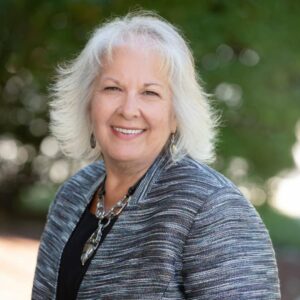2017 Leader of Tomorrow: Jason Postl, CEO
Jason Postl isn’t the average healthcare CEO, and his facility definitely doesn’t resemble the average skilled nursing care site. Over the past four years, North Mountain Medical & Rehabilitation Center, Phoenix, has added enough specialty services to create a facility category unto itself. Among its 155 skilled nursing beds, the site offers physical, occupational and speech therapies, ventilation therapy, dialysis, PICC insertions, bronchoscopies and even blood transfusions, all on site. If Postl has his way, a telemetry unit could be next.
Jason Postl, CEO |
Postl credits much of North Mountain’s success to geographical luck—unlike many other states, Arizona allows many types of specialty services in the skilled nursing facility (SNF) setting and has managed care plans that will reimburse for them. When Postl joined the team in 2013, North Mountain had about 60 beds dedicated to high-acuity ventilation/tracheostomy therapy and dialysis. Now, it has 143 beds devoted to that care level. Meanwhile, the facility has risen from a two-star to a five-star site, despite the high acuity of its residents and sweeping changes to the Centers for Medicare & Medicaid Services’ rating system.
Under the clinical specialty programs, North Mountain has reduced its hospital readmission rate from 45 percent to 19 percent in just three years. The idea is to build the clinical skills to keep residents on site for certain procedures instead of sending them—and the reimbursement revenue—to the hospital.
“About 97 percent of our patients meet criteria for hospital admission,” he says. “What we found is when we sent residents to the hospital for transfusions, bronchs or PICCs, the hospital would keep them, and it turned into a seven-day intensive care stay. But if we had the clinical training to keep them, we wouldn’t lose out on revenue, and it would help justify that cost of these procedures.”
Going the specialty route can be very risky, especially if you miscalculate your census needs, he says. “If you apply for 30 beds at the tracheostomy and ventilation support rates and then you can’t fill those beds, you still have to staff them at that higher level. You can lose a lot of money, which is why people are hesitant.”
No great initiative happens without investment, and maintaining North Mountain’s new specialty programs required intensive training efforts and substantial changes in staffing. “Training was definitely one of the keys, but we also had to turn over a lot of the previous staff because they weren’t the caliber of providers that we needed,” he says. “Then we hired about 300 new employees. We had to get people who have the drive, the intelligence and the compassion to take on residents like these, including a lot of behavioral patients.”
That meant adding specialty provider services, including psychiatrists, pulmonologists, nephrologists, cardiologists, social workers and more than 70 respiratory therapists. “We have 20-year-olds, 40-year-olds, 60-year-olds and 90-year-olds. A lot of them are here because of life-altering events that happened very suddenly.”
Finding—and keeping—excellent skilled nursing employees is a complex art form, especially in high-acuity environments, Postl admits. “We’ve gotten much more selective about hiring. Even today, we only hire about 18 percent of applicants,” he says. “Then, once you hire them, you need to support the heck out of them. For us, that means guaranteeing their hours, paying them well and giving them regular feedback on their care quality.”
Postl uses a six-point “score board” to post monthly feedback on quality performance, including short-notice call-offs, call-light response time, resident fall and charting compliance. The list also includes an opportunity for peers and families to nominate a caregiver for providing what he calls a “Five-Star Moment.” Then he posts the monthly results in the staff break room. “We don’t shame anybody if they’re at the bottom of the list, but certainly people don’t like to see their name at the bottom,” he says. “They’ll do what they can to move their name up. I’ve found that good employees love the accountability.”
As the LTC industry continues to change, physicians need to change along with it, Postl says. “Many community physicians don’t understand what level of care can be done in a SNF. Right now, they’re still in a LTAC [long-term acute care hospital] mentality even though we can do what an LTAC does at 50 percent of the cost.”
His main factors for success? “My director of nursing is super ambitious and loves to be the front-runner on things. We also have 12 full-time therapists and a great rehab director, which is crucial since our residents are very dependent and it’s labor-intensive work. As an administrator, I could push all day long, but if I didn’t have the clinical team to support the ideas, they wouldn’t happen.”

Pamela Tabar was editor-in-chief of I Advance Senior Care from 2013-2018. She has worked as a writer and editor for healthcare business media since 1998, including as News Editor of Healthcare Informatics. She has a master’s degree in journalism from Kent State University and a master’s degree in English from the University of York, England.
Related Articles
Topics: Articles , Executive Leadership , Leadership











